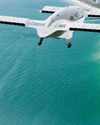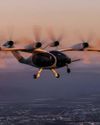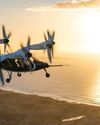
In 2022, drones are being employed in a range of industries. This includes film and video production, leisure, energy, construction and manufacturing, cargo delivery, and agriculture. However, in Africa, drones are being employed to fight a unique battle. With their rapid adoption across wildlife reserves in southern Africa over the past decade, drone technology is one of the best tools in the arsenal of conservationists fighting to preserve the diversity of Africa's wildlife ecosystem.
Over the last decade, poaching has become one of the biggest threats to wildlife diversity and is responsible for the population decline of endangered species in southern Africa. Among the worst affected are pangolins, rhinos, and elephants. The global illegal wildlife trade is estimated to be a $23 billion industry. This includes the smuggling of items such as elephant ivory and rhino horns.
According to the Air Shepherd foundation, from 2007 until the present day, rhino poaching in South Africa alone rose by 9,000%, The foundation estimates that a rhino is slaughtered every 10 hours and an elephant is killed every 14 minutes. The foundation forecasts the extinction of these species within 10 years. According to estimates, today fewer than 30,000 rhinos are found in the wild, down from a population of 70,000 in 1970. Based on data from Save the Rhino International, the height of the rhino-poaching war in South Africa came between 2014 and 2016 when an average of three rhinos were killed every day, with around 1,200 rhinos poached annually.
However, the same data shows that, from 2017, the number of rhinos poached experienced a noticeable decline. Cathy Dean, CEO of Save the Rhino International, stated that in 2020, the frequency of rhino-poaching in South Africa had decreased down to 'every 22 hours'. Dean described this as a 'much-needed decline since the peak of the poaching crisis'.
Bu hikaye Future Flight dergisinin September 2022 sayısından alınmıştır.
Start your 7-day Magzter GOLD free trial to access thousands of curated premium stories, and 9,000+ magazines and newspapers.
Already a subscriber ? Giriş Yap
Bu hikaye Future Flight dergisinin September 2022 sayısından alınmıştır.
Start your 7-day Magzter GOLD free trial to access thousands of curated premium stories, and 9,000+ magazines and newspapers.
Already a subscriber? Giriş Yap

Sustainability and connectivity: top of the agenda for private jet industry
The executive aviation industry is currently facing a paradox. On the one hand, demand for private flying remains strong, propelled by the rise in the number of high-net-worth individuals around the globe. While on the other hand, the industry is increasingly being questioned by the public, the media, and politicians over its environmental credentials.

NASA, ESA join forces to land European Rover on Mars
The space agencies signed a new agreement that will see NASA supply heating units for the Rosalind Franklin rover, which could launch as soon as 2028.

Long-awaited Starliner launch breaks a six-decade drought
An Atlas rocket has launched with astronauts aboard for the first time since Gordon Cooper's final Mercury flight in his Faith 7 capsule on 15 May 1963, powered by an Atlas LV-3B 130-D. The Atlas V rocket that launched on 5 June, manufactured by United Launch Alliance and powered at liftoff by a Russian-built RD-180 first-stage engine, carried Boeing's Starliner crew ferry ship to orbit following multiple launch delays over the past several days.

Non-CO2 emissions measured in commercial aircraft 100% SAF test
Results from the world's first in-flight study of the impact of using 100% sustainable aviation fuel (SAF) on both engines of a commercial aircraft show a reduction in soot particles and formation of contrail ice crystals compared to using conventional Jet A-1 fuel.

Avfuel, Neste sign SAF supply increase extension
Avfuel and renewable fuel producer Neste have finalised an extension to their agreement regarding the supply of sustainable aviation fuel (SAF) and set a framework for the deal through 2027.

First flight for Electra hybrid 'blown lift' aircraft
Electra's blown-lift design uses eight electric motors to increase wing lift, allowing the eSTOL aircraft to take-off and land in just one-tenth of the space needed by conventional aircraft.

Saudi Arabia's groundbreaking air taxi trial set to transform Hajj travel for pilgrims
In a historic move, Saudi Arabia has successfully conducted its first air taxi trial in Mecca, setting the stage for deployment in the coming years and transforming Hajj transportation for pilgrims.

Lilium, French Government in 'advanced' talks for eVTOL jet manufacturing hub
The German manufacturer says it is in ‘advanced discussions’ with the French government to add a high-volume aircraft production facility in France, citing it as an attractive market for its flagship Lilium Jet. The company plans for the aircraft to enter service in 2026.

Joby partners with Mukamalah Aviation
Last month Joby Aviation announced it has signed a Memorandum of Understanding (MoU) with Mukamalah, a wholly owned subsidiary of Saudi Aramco, the operator of the world's largest fleet of corporate aircraft, to introduce Joby's aircraft to the Kingdom of Saudi Arabia.

Joby acquires autonomous flight developer Xwing
Joby Aviation is one of many electric vertical take-off and landinng (eVTOL) air tax manufacturers that predicts autonomy will be the driver of ubiquitity for advanced air mobility (AAM) services and the company is placing its money where its mouth is.